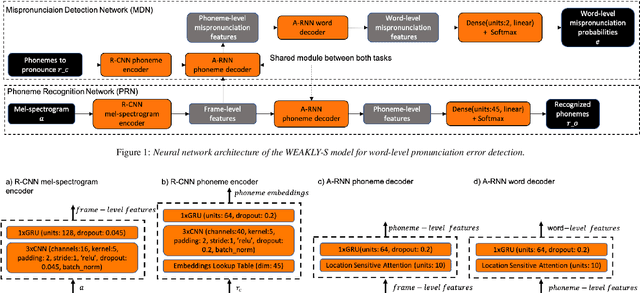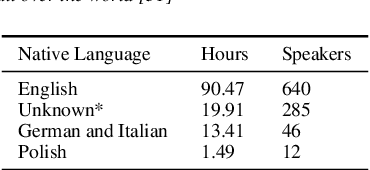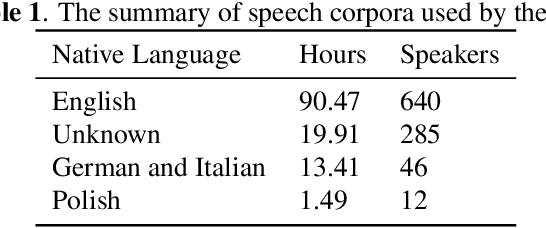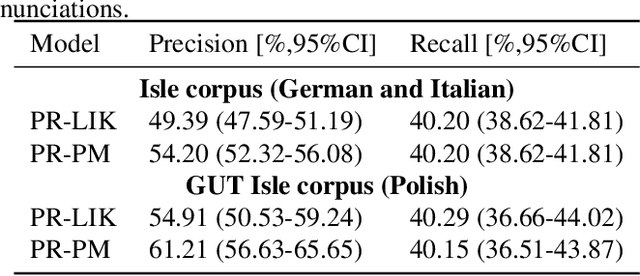Shira Calamaro
Weakly-supervised word-level pronunciation error detection in non-native English speech
Jun 07, 2021



Abstract:We propose a weakly-supervised model for word-level mispronunciation detection in non-native (L2) English speech. To train this model, phonetically transcribed L2 speech is not required and we only need to mark mispronounced words. The lack of phonetic transcriptions for L2 speech means that the model has to learn only from a weak signal of word-level mispronunciations. Because of that and due to the limited amount of mispronounced L2 speech, the model is more likely to overfit. To limit this risk, we train it in a multi-task setup. In the first task, we estimate the probabilities of word-level mispronunciation. For the second task, we use a phoneme recognizer trained on phonetically transcribed L1 speech that is easily accessible and can be automatically annotated. Compared to state-of-the-art approaches, we improve the accuracy of detecting word-level pronunciation errors in AUC metric by 30% on the GUT Isle Corpus of L2 Polish speakers, and by 21.5% on the Isle Corpus of L2 German and Italian speakers.
Mispronunciation Detection in Non-native (L2) English with Uncertainty Modeling
Feb 08, 2021



Abstract:A common approach to the automatic detection of mispronunciation in language learning is to recognize the phonemes produced by a student and compare it to the expected pronunciation of a native speaker. This approach makes two simplifying assumptions: a) phonemes can be recognized from speech with high accuracy, b) there is a single correct way for a sentence to be pronounced. These assumptions do not always hold, which can result in a significant amount of false mispronunciation alarms. We propose a novel approach to overcome this problem based on two principles: a) taking into account uncertainty in the automatic phoneme recognition step, b) accounting for the fact that there may be multiple valid pronunciations. We evaluate the model on non-native (L2) English speech of German, Italian and Polish speakers, where it is shown to increase the precision of detecting mispronunciations by up to 18% (relative) compared to the common approach.
 Add to Chrome
Add to Chrome Add to Firefox
Add to Firefox Add to Edge
Add to Edge